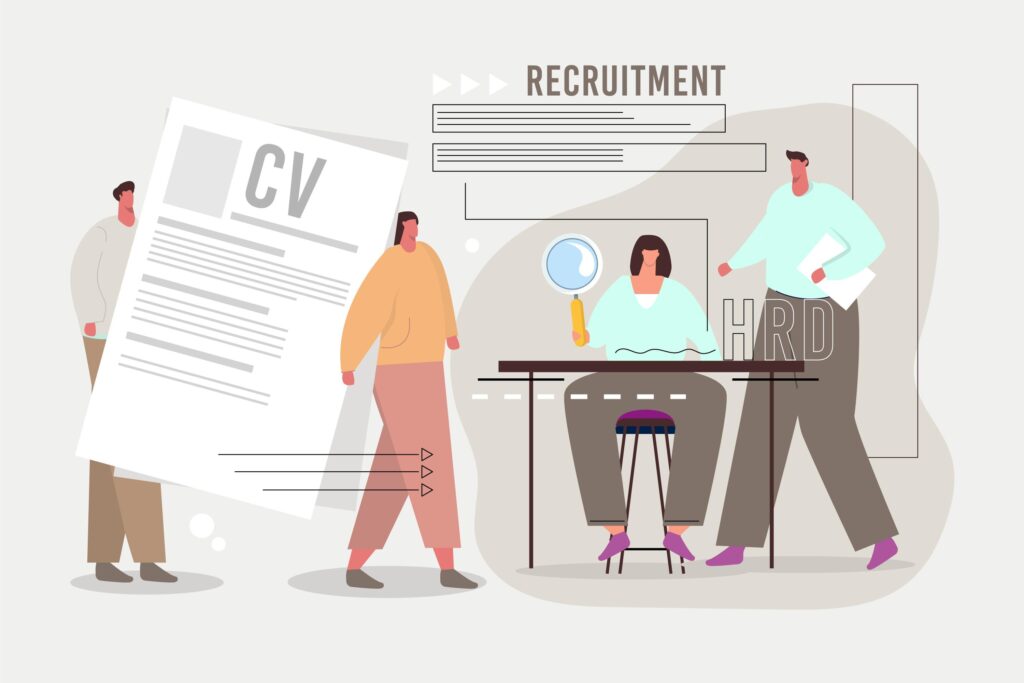Pre-employment tests are a powerful tool in the hiring process, offering a more comprehensive view of a candidate’s abilities beyond just their resume and interview performance. These tests can reveal critical insights into a candidate’s technical skills, problem-solving abilities, and interpersonal skills, ultimately leading to better hiring decisions and a more efficient recruitment process.

According to a recent study, 65% of hiring managers found that candidates who underwent game-based assessments were more engaged and showed a 20% improvement in job fit compared to those who went through traditional methods.
PerspectAI’s approach is more than just a novel idea; it’s a game-changer in the hiring landscape. By leveraging gamification, PerspectAI provides a detailed analysis of both technical and non-technical skills, ensuring that you don’t just fill a position, but fill it with the right person. In a market where the average time to hire can extend up to 42 days, PerspectAI’s assessments offer a streamlined, engaging experience that accelerates the hiring process while ensuring quality and precision.
Ready to dive into the seven essential factors to consider when choosing pre-employment tests?
Factors to Consider When Choosing Pre-employment Tests
1. Alignment with Job Requirements
One of the most critical aspects of pre-employment tests is their alignment with the specific job requirements. Picture this: you’re hiring for a highly specialized role, such as a cybersecurity expert. A generic skills test might not effectively gauge the nuanced skills needed for this position. Instead, a test that mirrors the specific challenges and scenarios the candidate will face in your organization can provide a clearer picture of their capabilities.
Customized assessments are key here.
- Tailoring tests to match the unique demands of a job role helps ensure that candidates are evaluated on criteria that matter most for that position. For example, if you’re hiring a software developer, an assessment that includes coding challenges relevant to your projects can offer deeper insights into their technical skills and problem-solving abilities.
Example: Consider a tech company looking for a data analyst. By using a customized assessment designed to simulate real-world data challenges, the company was able to identify candidates with strong analytical skills and practical problem-solving abilities.
2. Engaging and Interactive Experience
The candidate experience is a crucial factor in the effectiveness of pre-employment tests. Traditional assessments can often feel monotonous and disengaging, potentially leading to a less accurate evaluation of a candidate’s abilities. In contrast, game-based assessments offer a more engaging and interactive experience, which can also reveal a candidate’s true potential.
- Interactive assessments, such as those that incorporate gamification, make the testing process enjoyable and immersive.
- Candidates are more likely to perform at their best when they are actively engaged in the testing process.
- Additionally, these assessments can provide insights into how candidates approach problem-solving and handle real-world challenges.
A substantial 82% of companies utilize some form of pre-employment tests to evaluate candidates. This improved experience often translates into better performance and a more accurate reflection of the candidate’s abilities.
3. Accurate Skills Gap Analysis
A thorough skill-gap analysis is essential for understanding a candidate’s strengths and areas for development. Pre-employment tests that offer detailed insights into a candidate’s skill gaps help employers make more informed hiring decisions and tailor their training programs accordingly.
Advanced assessment platforms provide in-depth analyses of both technical and soft skills. This level of detail allows employers to identify specific areas where a candidate may need further development, which can be invaluable for onboarding and training.

Example: A consulting firm used a sophisticated assessment tool to evaluate candidates for a project management role. The detailed skills gap analysis revealed that while many candidates had strong technical expertise, they lacked critical project management skills. This insight enabled the firm to design targeted training programs, leading to a 40% improvement in project delivery performance.
According to a recent study by HR Tech Outlook, 73% of companies are now utilizing specialized assessment tools to evaluate the technical skills of their candidates.
4. Reduced Time to Hire with Pre-Employment Tests
Efficiency in the hiring process is crucial, and pre-employment tests can significantly impact the time it takes to fill a position. Streamlined assessments help quickly identify top candidates, allowing for faster decision-making and a more efficient hiring process.
Game-based and interactive assessments contribute to reducing the time to hire by providing instant feedback and streamlined evaluations. This efficiency helps accelerate the recruitment process and reduces the time spent on initial screenings and shortlisting.
According to industry data, companies that use pre-employment assessment tools are 24% more likely to make successful hires.
5. Standardized Evaluation
Ensuring consistency and fairness in the evaluation process is crucial for making unbiased hiring decisions. Pre-employment tests should offer standardized metrics to evaluate all candidates on the same criteria. This eliminates subjectivity and ensures a level playing field.
Standardized assessments provide consistent evaluation metrics, allowing for reliable comparisons of candidates’ performance. This approach minimizes biases and ensures that each candidate is assessed according to the same criteria.
- Consistency in Criteria: All candidates are subjected to the same challenges and scenarios, ensuring fair evaluation.
- Bias Reduction: Standardized tests help mitigate subjective biases that can influence hiring decisions.
Example: A multinational corporation implemented standardized assessments across different regions to ensure a fair and consistent evaluation process. This approach resulted in a 15% increase in the diversity of hires and a more equitable hiring process.
6. Cost Savings
Pre-employment tests can lead to significant cost savings by improving the accuracy of hiring decisions and reducing the need for repeated recruitment efforts. Efficient assessments streamline the hiring process, which can lower overall recruitment costs. The cost of recruiting, hiring, and onboarding can run as high as $240,000 – and that’s just the monetary figure.
Advanced assessment platforms help reduce costs by minimizing the time and resources spent on manual screening and reducing the risk of bad hires. The result is a more cost-effective recruitment process.
Organizations that use advanced pre-employment assessments have reported a 25% reduction in recruitment costs. For instance, a retail chain saved approximately $50,000 annually by decreasing the number of unqualified candidates and reducing the time spent on hiring.
A survey from Robert Half also shows that 26% of respondents said they would leave negative comments on review sites about lengthy and vague interview processes
7. Improved Hiring Quality with Good Pre-employment Tests
The ultimate goal of pre-employment tests is to enhance the quality of hires. Effective assessments provide a comprehensive view of a candidate’s skills and fit for the role, leading to better hiring decisions and improved job performance.
Detailed and interactive assessments contribute to higher hiring quality by offering a thorough evaluation of candidates’ strengths and potential. This leads to more informed hiring decisions and better alignment with job requirements.
Candidates who excel in the assessments are found to be a better fit for the role, resulting in improved job satisfaction and performance.
Select the right pre-employment tests to optimize your hiring process. Consider factors such as alignment with job requirements, engaging experiences, accurate skills gap analysis, reduced time to hire, standardized evaluation, cost savings, and improved hiring quality to make more informed and effective hiring decisions. Advanced testing platforms offer innovative solutions that address these factors, helping you find the best candidates for your organization.
Excited to enhance your hiring strategy? Explore how PerspectAI’s advanced pre-employment assessments can transform your recruitment process and lead you to your next top talent.